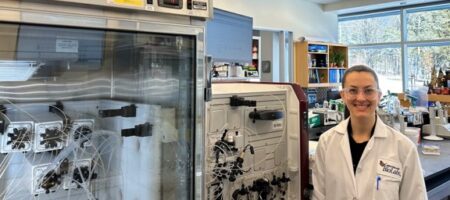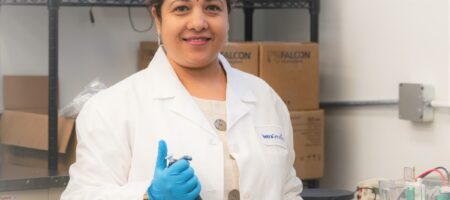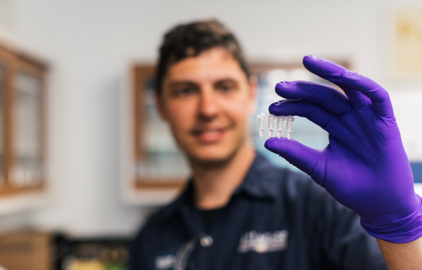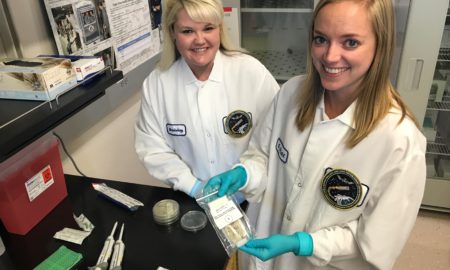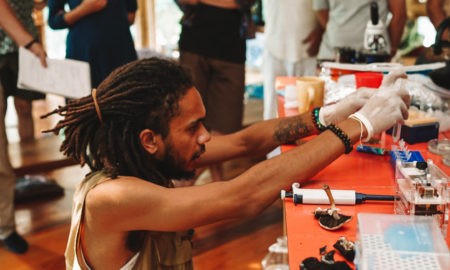Meet a Scientist: Jessica Stark unleashes the potential of cell-free systems
If you know miniPCR, you might already be familiar with BioBits®: the cell-free protein expression system you can use to make core biology topics come to life. Because students simply need to add water to express a variety of proteins, the system is ideal for educational uses ranging from the demonstration of fundamental cellular processes to hands-on synthetic biology. But cell-free systems are useful for a wide range of applications beyond the classroom, as well. We caught up with BioBits co-developer Dr. Jessica Stark to learn a bit more about BioBits and cell-free technology in general. Jessica is currently a postdoctoral fellow at Stanford University and will be a professor at MIT in 2024.
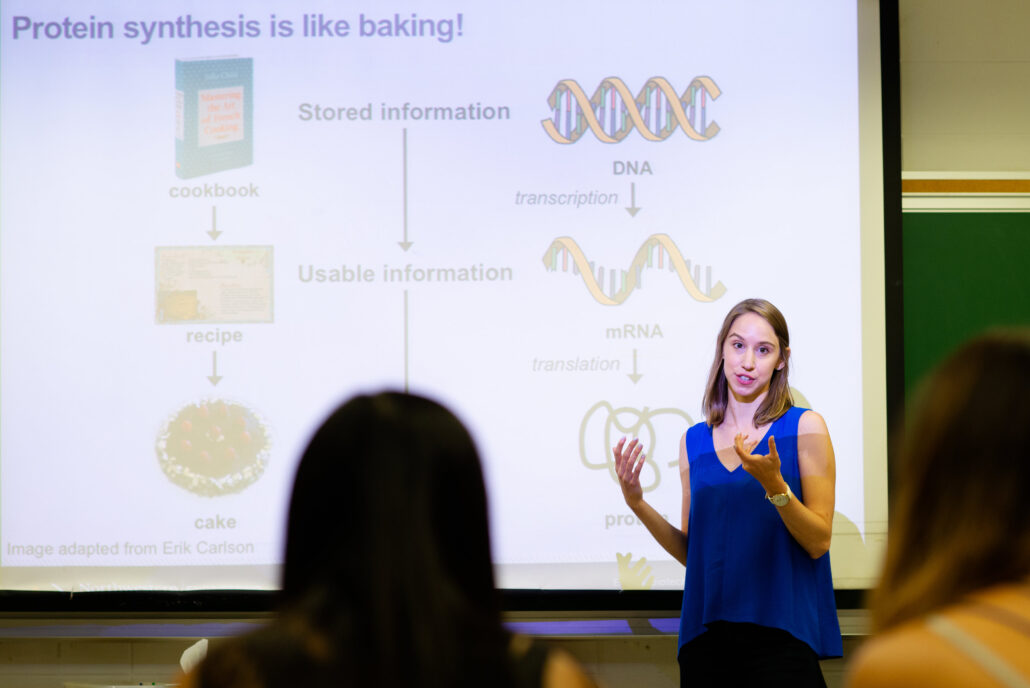
What inspired you to develop BioBits?
Hands-on experimentation can be tough to implement in the biology classroom. Many biology activities use living cells, which require specialized equipment and expertise to grow. BioBits overcomes these hurdles by using cell lysates to carry out biological processes like RNA transcription and protein translation. Cell lysates, which you can think of as the guts of a cell, are not alive, but contain all of the biological machinery that is inside living cells. Cell-free lysates can be freeze-dried, meaning that they can be stored without refrigeration and all you need to do is add water to run biological experiments. Their speed, ease of use, and portability makes cell-free reactions much easier to use than living cells, and ideal for interrogating biology in the classroom.
Today, we have three commercial BioBits kits, designed to teach the central dogma of biology, protein structure and function, and mechanisms of antibiotic resistance, with more activities in development! It has been so rewarding to see our kits used in classrooms, helping to make high-quality education accessible to all.
What other cell-free projects have you worked on?
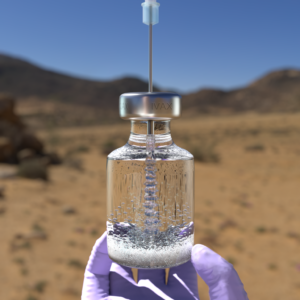
My PhD research focused on using cell-free systems to make vaccines that could help address antibiotic-resistant bacteria. Conjugate vaccines, a type of antibacterial vaccine, are among the safest and most effective ways to prevent bacterial infections. Unfortunately, the way that we have traditionally made conjugate vaccines is complex and slow, meaning that the emergence of new drug-resistant bacteria currently outpaces our ability to develop vaccines against them. In addition, conjugate vaccines have to be refrigerated, which limits our ability to vaccinate people living in remote and resource-limited areas.
To address these limitations, I developed a cell-free system called iVAX that can synthesize a dose of conjugate vaccine in just an hour, which promises to accelerate development of new vaccines. In addition, iVAX reactions can be freeze-dried, eliminating the need for refrigeration and enabling global access. We showed that conjugate vaccines can be synthesized in iVAX reactions costing ~$6 per human dose and protected mice from an otherwise deadly bacterial infection. Overall, iVAX promises to accelerate development and global distribution of conjugate vaccines to address emerging drug-resistant bacteria.
Which potential application of cell-free protein synthesis is the most exciting to you?
As I was working to use cell-free systems to make vaccines, other scientists were exploring how these same systems could be used as portable biosensors. Imagine if you could use a cell-free system in a local clinic to diagnose whether someone has COVID-19 or the flu, or in the field to assess the quality of drinking water. These are applications that researchers are actively exploring.
In fact, through the Genes in Space program, a high school student named Selin Kocalar devised a project to use BioBits reactions as biosensors to test for bacterial contamination in the water supply on the International Space Station. Her experiments were carried out by astronauts aboard the ISS last summer. Proof that cell-free systems can be used to carry out biology research in even the most extreme environments!
How did you get interested in science when you were younger?
I am an engineer at heart – I love building things and solving problems. Legos were my favorite toy growing up, and as I was preparing to apply to colleges I knew I wanted create something that could benefit society. I was particularly interested in biology and human health, but wasn’t sure how engineering fit in. Around that time, I and other girls my age were signing up to receive a new vaccine which had been shown to prevent viral infections that cause cervical cancer. This vaccine is a virus-like particle, an engineered molecule that looks enough like a virus to elicit antiviral immunity, but is not an active virus and so can’t cause infection, making it safer than other kinds of antiviral vaccines. When I learned about the science and engineering behind this vaccine, it was a lightbulb moment for me. Biological engineers were creating technologies that could significantly advance human health, including by completely preventing certain kinds of cancer. I knew immediately that I wanted to be involved in this intersection of engineering and medicine, which remains the focus of my work.
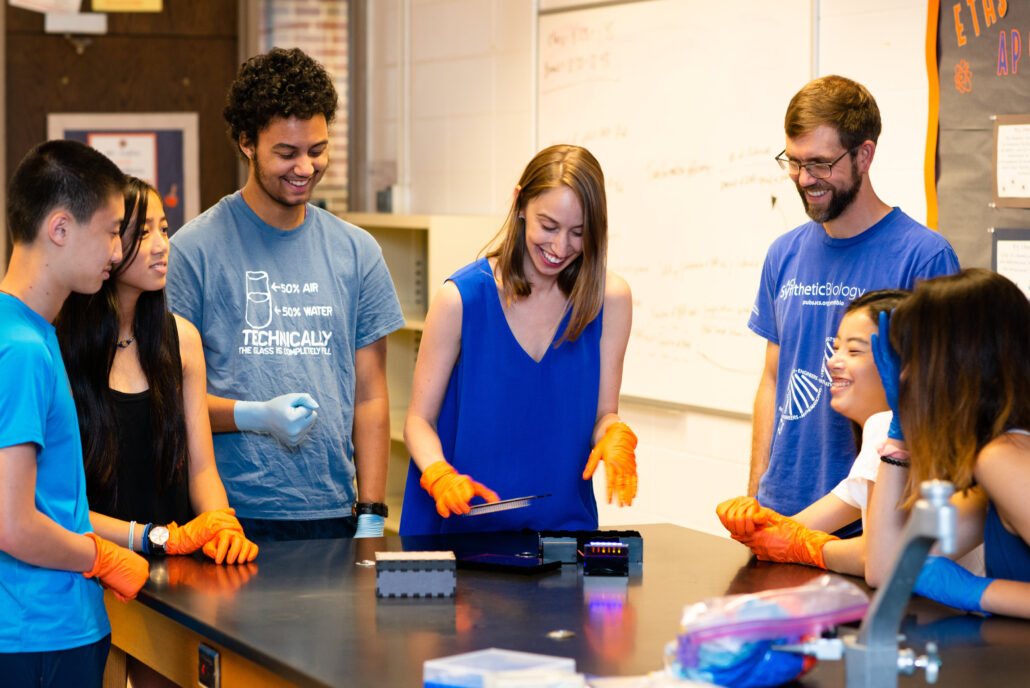
Dr. Stark demonstrates BioBits in the classroom
Do you have any advice for students who are interested in a career in science?
Follow your passions: we are in an unprecedented time of scientific discovery and innovation. Cutting-edge technologies are helping us better understand the world around us and address some of the most complex problems facing society, with applications in human health, sustainability, and beyond. There is so much to do, and we need talented people who are passionate about solving problems in many different fields. For anyone starting out in science, I recommend exploring different areas of research, through opportunities like internships or summer research experiences, to find the problems that inspire you!
Embrace difference: it is a proven fact that diverse perspectives accelerate scientific progress. Each scientist has contributions to science that only they can make, made possible by their unique perspectives, lived experiences, and identities. It can be uncomfortable when your identity or interests are different than many of your peers. But being different is a superpower –it means you see opportunities or solutions that others don’t. This is true for science, but also for other careers. There is no blueprint for success in STEM, and I encourage the next generation of scientists to forge their own paths.
Find your community: We are stronger together, and science is no exception. Whether it’s your colleagues and collaborators, affinity groups, community outside of science, or all of the above – find your people. There will be numerous highs and lows over the course of your life and career, and both wins and losses are sweeter when shared.


